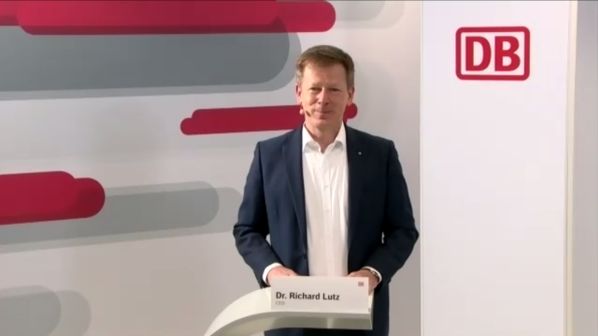THE CEO of German Rail (DB), Dr Richard Lutz, has called for “a paradigm shift” in the quality and capacity of Germany’s rail network, stating that its renewal will be a key task over the coming years.
“The current problems with reliability and quality are essentially due to a lack of capacity and outdated systems,” says Lutz. “We must and will tackle this together - the federal government, the railways and the entire industry.”
DB’s strategy will centre on the wholescale renewal of heavily-used corridors, more prone to disruption as passenger and freight is rapidly increasing, and will be developed in close cooperation with the federal government and the wider rail industry.
“Infrastructure geared towards the common good means above all an alignment with the transport and climate policy goals of the federal government,” says Lutz. “DB has made these goals its own as part of its Strong Rail strategy, and the entire industry has made them its own as part of the Rail Transport Master Plan.”
According to Lutz, passengers are returning to the network sooner than expected after the Covid-19 pandemic, and freight traffic is also rising faster than was anticipated.
“Current demand confirms our basic conviction that the growth and modal shift goals of the federal government are realistic,” he says. There have never been so many trains operating on the German network as there are today, but the network itself has not grown to meet this increasing demand.
Lutz says that at the same time, the quality of the infrastructure has continued to deteriorate because many systems are outdated and therefore prone to failure. A major modernisation programme is already in hand, giving rise to an unprecedented number of work sites that have a negative impact on train punctuality and performance.
“The current operational situation shows, both clearly and painfully, that we have a dilemma that can hardly be resolved in the short term.” According to Lutz, it is no longer possible to modernise and expand the network while maintaining train punctuality and service quality.
“All rail operators and therefore all passengers, transport authorities and freight customers are feeling these massive effects,” he says. “We are aware of that.”
DB was trying everything to minimise the impact of works on passengers and freight customers, but Lutz believes that a fundamental change of course and sustainable solutions are now needed to get to the heart of the problem. The status quo is not an alternative, he feels.
The solution lies in the railway infrastructure itself, critical to meeting growth and modal shift targets and also to maintaining service quality and punctuality. The current reliability and quality problems are essentially due to an aging network with insufficient capacity.
This applies in particular to the heavily-used core of the DB network, comprising 3500km currently at 125% capacity which could soon rise to 150% when infrastructure work is in progress.
To make the rail network fit for growth and modal shift, this heavily-loaded core must be developed into a high-performance network, with a permanent and sustainable improvement in all activities relating to punctuality, Lutz says.
According to Lutz, this will require longer route closures for infrastructure work, but accompanied by better advance planning for greater reliability and longer lead times for all parties involved. This will be long task stretching over several years, but will create a positive impetus for capacity and quality across the entire network.
For detailed data on German projects, subscribe to IRJ Pro.

